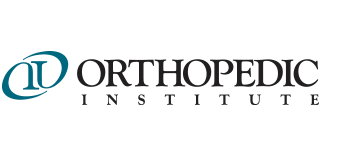9 Questions with PTs Aaron Olson and Paul Kreber
This week, we’re meeting two of our premier physical therapists: Aaron Olson and Paul Kreber. Aaron and Paul are part of our strong PT team, both in-house at Orthopedic Institute, as well as off-site at the OI/D1 Sports Training Institute.
Read on to learn more about their favorite things about working at OI and what they would tell every patient before they walk in their office doors.
 Paul Kreber, PT, MS, SCS, CAFS
Paul Kreber, PT, MS, SCS, CAFS
- Physical Therapist
- Bachelor of Science, South Dakota State University
- Master of Science, University of South Dakota, PT, MS,
- Sports Clinical Specialist (SCS) , One of Only Five in the State of South Dakota
- Certification in Applied Functional Science (CAFS)
 Aaron Olson, DPT, OCS, ATC, CSCS, SFMA, FMSC
Aaron Olson, DPT, OCS, ATC, CSCS, SFMA, FMSC
- Physical Therapist
- Board Certified Specialist in Orthopedics (OCS)
- Bachelor of Arts, Northwestern College
- Doctorate of Physical Therapy, University of Nebraska Medical Center
- Certified Strength and Conditioning Specialist (CSCS)
- Functional Movement Systems Certification (FMSC)
- Selective Functional Movement Assessment (SFMA)
How did you decide to become a PT?
AO: I got my leg stuck in an auger the summer before my freshman year in high school. I tore it up pretty good and had to do physical therapy for the first time in my life. I had an awesome PT that I am still in touch with, and he got me ready to play basketball later that fall.
PK: Once I figured out in high school that I wasn’t going to become a professional athlete, I started looking into careers that would allow me to possibly work with an athletic population. I liked the idea of an active job and, in a way, to promote ways to improve the health and wellbeing of others. Physical therapy became a natural fit.
What led you to join the Orthopedic Institute team?
AO: I was looking for a place that really valued its patients. Several places seemed to only care about numbers, since they would schedule me with a patient every 15 minutes. Orthopedic Institute purposely allows me more one-on-one time with each of my patients, which I believe allows better outcomes for them. I was also looking for a place where I would be able to continue to use my athletic training background. By working with OI, I am able to help cover local, high-school events.
PK: More than seven years ago I had the opportunity to join Orthopedic Institute in a rather unusual circumstance. A good friend of mine suffered an injury and, while rehabbing at OI, found out that OI was looking to hire another physical therapist. He contacted me, which led to a phone call to Brad Pfeifle, VP of Sports Medicine. An unfortunate situation for my friend ended up being extremely beneficial to me.
What is your favorite part of your job?
AO: The best part of my job is seeing my patients get back to doing the things they love to do in life, whether it be playing sports, working out or just going for a walk without pain.
PK: There are several factors I enjoy, but by far the best is that my job allows me to meet so many different people within not only the immediate Sioux Falls region, but also across the state of South Dakota and beyond. Everyone has a unique story. It is very rewarding to be in a position where you are helping people of all ages and walks of life through challenging circumstances.
What do you feel are the strengths of Orthopedic Institute’s PT team?
AO: We are able to collaborate in order to best serve our patients. The collective knowledge that our team possesses is very extensive and includes a wide range of areas. If I can’t solve a problem, or have a question I can’t answer, I know one of my coworkers will be able to help me.
PK: I am also very fortunate to be surrounded by committed colleagues that want to do what is best for their clients. Several, including myself, have advanced certifications that demonstrate a commitment serving our client base. I have also found it incredibly beneficial to have such direct interactions with physicians. I have worked in a variety of settings throughout my career. Orthopedic Institute delivers, hands-down, the most comprehensive and complete type of medical care.
What is the best part about working with patients?
AO: The best part of working with patients is the same as my favorite part of working at OI. I love helping my patients improve and reach their goals.
PK: The best part of working with patients is assisting them through the recovery process. Whether it is a young athlete attempting to return to a school sport, or a senior citizen recuperating from a knee replacement, I get to hopefully experience the final product as clients return to prior function.
If you could tell every patient one thing before they came in, what would it be?
AO: I can’t fix you. My job is to empower you with the tools and education you need so that you are able to reach your goals and also maintain the gains that are made throughout your rehab process through your life.
PK: Trust the rehab process. Be patient. Perform your home program. Recovery, whether it is from an injury, accident, general wear and tear or surgery, takes time. The body needs time to heal, and everyone heals at a different rate. Try not to compare your situation to others’, as everyone’s circumstances will be different.
How do you spend your time when you’re not at Orthopedic Institute?
AO: Hunting, fishing, dog training, playing basketball, working out, reading and spending time with my wife, friends and family
What is your go-to movie theatre snack?
AO: Actually, I don’t remember the last time I got a snack at the movie other than a Coke – I’m kind of a health nut.
What is one thing people would be surprised to learn about you?
AO: I studied abroad in Ecuador when I was a senior in college.
PK: People may be surprised to learn that I taught high school chemistry and coached at Sioux Falls O’Gorman High School for five years prior to attending PT school at the University of South Dakota.


 Paul Kreber, PT, MS, SCS, CAFS
Paul Kreber, PT, MS, SCS, CAFS Aaron Olson, DPT, OCS, ATC, CSCS, SFMA, FMSC
Aaron Olson, DPT, OCS, ATC, CSCS, SFMA, FMSC

